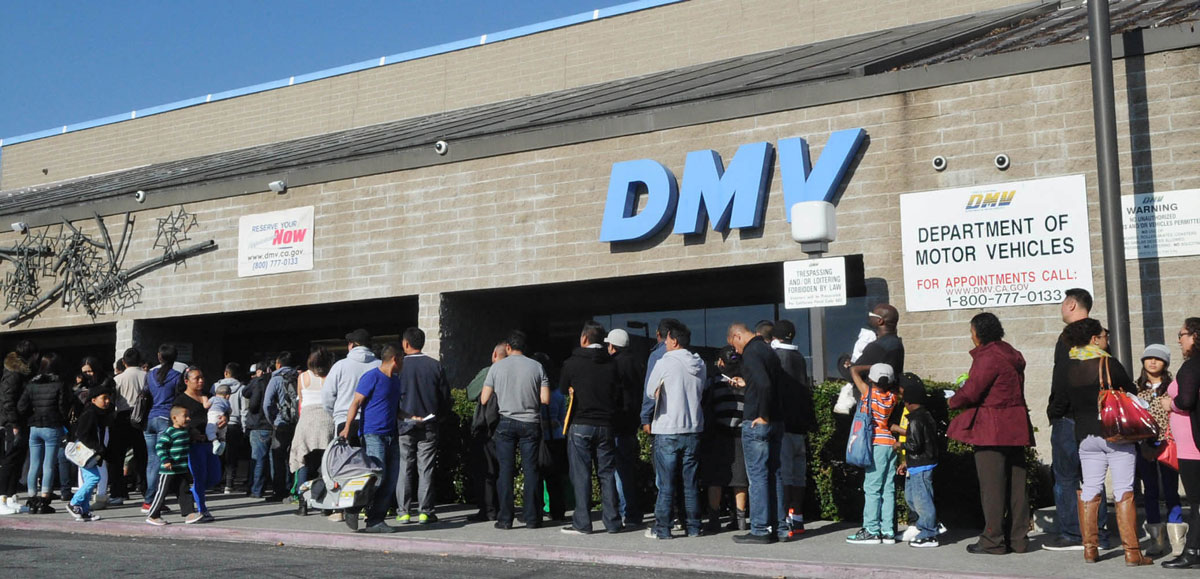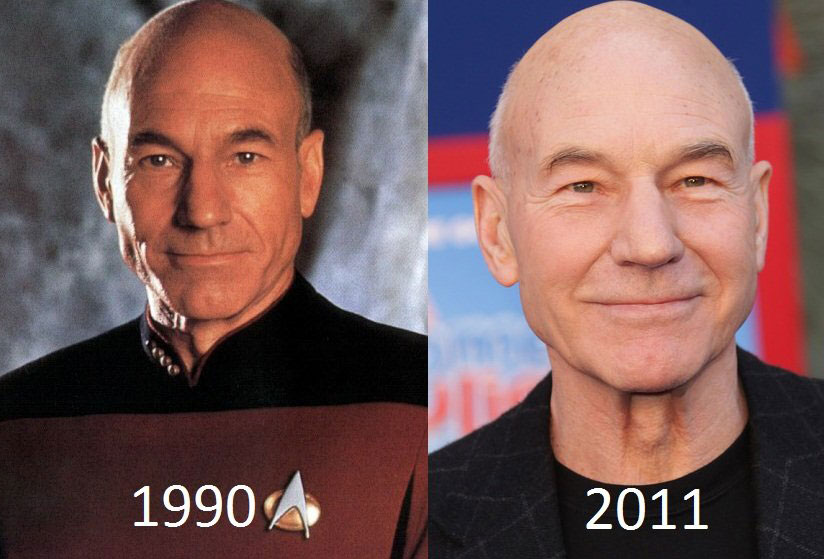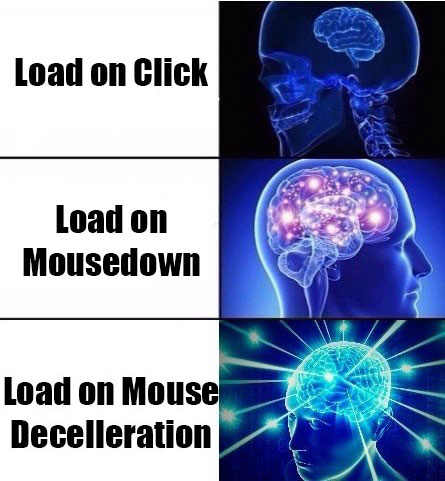Perceived Performance
The only kind that really matters.
Hi, I'm Eli.
I like to make things on the internet

Today I'll be howling about
- Why focusing on perceived performance is smart
- How humans perceive time
- A box of tricks to manage perceived loading time
- Predictive preloading
Why Perceived
Performance Matters
Web Performance
is a matter of time.
Time is a funny thing.



Objective time
vs.
Subjective time
We've gotten INSANELY good at objective performance.
HTTP/2
Service workers
Code minification
Image optimization
Critical Rendering Path
Tree shaking
Code splitting
Lazyloading
Edge node caching
SVG spritesheets
We optimize for objective time.
What if users don't notice?

Just Noticeable Difference.
Objective Time differences of 20% or less are imperceptible.
Steve Seow, MicrosoftShoot for 30% speedup.
We don't live inside of a web performance blog post.

Don't chase diminishing returns.
Focus on the subjective.
Better
💥 for
🤑.
How Humans
Sense Time
Active phase
vs.
Passive phase

Humans tend to overestimate passive time by 36%.
Richard Larson, MITTakes about ~1 second to transition to a passive state
Nielsen Norman GroupHow do we use this
- Keep users in an active state, keep them from entering a passive state.
- Make passive phases feel faster than they actually are.
Keep users active
Key for short durations.
What we can do
- Don't tell users they're waiting.
- Respond to users immediately, even if nothing is happening.
- Keep users in flow with more responsive event listeners.
Resist loading
indicators
Woah. Woah. Woah.
Slow down here.

Don't use loaders?

But perceived perf?
Loaders tell users
that they have to wait.
Adding a loader prematurely
puts them in a passive state.
As waits approach
~1 second,
start to use loaders.
Immediate
Feedback
Immediacy keeps users from entering a passive state.
Stay :active, kids!
Optimism!
Optimism!
Optimism!
 Hyperbole and a half
Hyperbole and a half
Better Event
Listeners
Takes
~1 second to
enter a passive state.
React as soon as
the user signals intent.


Mousedown gives you a
100-150ms head start.
:active animations
buy you more time
~200ms duration gives you a +50ms bonus
Works on touch devices too!
Begin on touchstart.
Cancel on touchmove.
Un-suck passive waits
You start to lose people
at
~1-4s of waiting.
Critical to get this right.
What we can do
- The right loading animation can make time pass more quickly.
- Adapt loading scheme to each user.
- Distract with shiny objects.
The Perfect
Progress Bar
Uncertain waits feel longer.
David Maister
Progress bars give
users certainty.
Animation makes a difference.
Bars with accelerating
bands feel
12% faster.
But what about spinners?
Meh.
Spinners aren't versatile
- < ~1s? Don 't indicate loading.
- > ~2s? Really need a progress bar.
- Only useful between 1 and 2 seconds.
Real progress bars
can be overkill.
Most progress bars are fake.
Many are pretty 💩y.
Adaptive loading
Keep it real…ish.
Measure requests.
const API_EXPECTED_TIME = 1000;
const SOME_OTHER_EXPECTED_TIME = 2000;
function getImage() {
let t0 = performance.now();
fetch(`${GET_IMAGE_API_URL}`).then(response => {
const apiRoundtrip = performance.now() - t0;
setPerformanceScalar(apiRoundtrip, API_EXPECTED_TIME);
// Do stuff
});
}
function setPerformanceScalar(observed, expected) {
this.performanceScalar = observed / expected;
// ...
// tuck this away in app state, local storage, a global variable, etc
}
//...
Some tips
- Set baseline times with your test runner.
- Normalize for resource or payload.
- Adapt your whole loading scheme.
Occupy Users'
Attention
Reticulating splines.

We can learn from gamedevs.
If this feels like cheating,
that's because it is.
You dirty cheaters, you.
Predictive
Preloading
React as soon as
users signal intent.
What if we could
predict their intent?
Gamedevs do this all the time.
You may have done it
without realizing.
Login form
~4+ second head start!
CTA Button
Exploiting behavioral quirks
- People tend to watch hover & active animations.
- People necessarily slow their cursor as it approaches a target.
People watch hovers.
Fancy hovers buy you
up to
600ms extra.
Cursors slow down.

 folks!
folks!